
Emergency medical services (EMS), also known as ambulance services or paramedic services, are emergency services that provide urgent pre-hospital treatment and stabilisation for serious illness and injuries and transport to definitive care. They may also be known as a first aid squad, FAST squad, emergency squad, ambulance squad, ambulance corps, life squad or by other initialisms such as EMAS or EMARS.

An emergency department (ED), also known as an accident and emergency department (A&E), emergency room (ER), emergency ward (EW) or casualty department, is a medical treatment facility specializing in emergency medicine, the acute care of patients who present without prior appointment; either by their own means or by that of an ambulance. The emergency department is usually found in a hospital or other primary care center.
A trauma center, or trauma centre, is a hospital equipped and staffed to provide care for patients suffering from major traumatic injuries such as falls, motor vehicle collisions, or gunshot wounds. A trauma center may also refer to an emergency department without the presence of specialized services to care for victims of major trauma.

In emergency medicine, the golden hour is the period of time immediately after a traumatic injury during which there is the highest likelihood that prompt medical and surgical treatment will prevent death. While initially defined as an hour, the exact time period depends on the nature of the injury and can be more than or less than this duration. It is well established that the person's chances of survival are greatest if they receive care within a short period of time after a severe injury; however, there is no evidence to suggest that survival rates drop off after 60 minutes. Some have come to use the term to refer to the core principle of rapid intervention in trauma cases, rather than the narrow meaning of a critical one-hour time period.

Battlefield medicine, also called field surgery and later combat casualty care, is the treatment of wounded combatants and non-combatants in or near an area of combat. Civilian medicine has been greatly advanced by procedures that were first developed to treat the wounds inflicted during combat. With the advent of advanced procedures and medical technology, even polytrauma can be survivable in modern wars. Battlefield medicine is a category of military medicine.
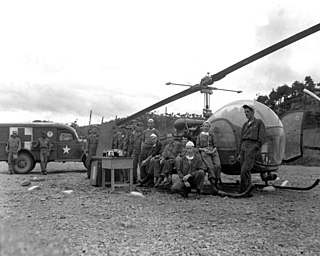
Mobile Army Surgical Hospitals (MASH) were U.S. Army field hospital units conceptualized in 1946 as replacements for the obsolete World War II-era Auxiliary Surgical Group hospital units. MASH units were in operation from the Korean War to the Gulf War before being phased out in the early 2000s, in favor of combat support hospitals.

Sanjay Gupta is an American neurosurgeon, medical reporter, and writer. He serves as associate chief of the neurosurgery service at Grady Memorial Hospital in Atlanta, Georgia, associate professor of neurosurgery at the Emory University School of Medicine, member of the National Academy of Medicine and American Academy of Arts and Sciences and is the chief medical correspondent for CNN.
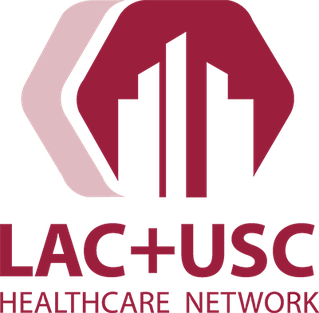
Los Angeles General Medical Center is a 600-bed public teaching hospital located at 2051 Marengo Street in the Boyle Heights neighborhood of Los Angeles, California, and one of the largest academic medical centers in the United States. The hospital facility is owned by Los Angeles County and operated by the Los Angeles County Department of Health Services. Doctors are faculty of the Keck School of Medicine of USC, who oversee more than 1,000 medical residents being trained by the faculty. Additionally, the United States Navy sends doctors, nurses and corpsmen to train at the hospital, working alongside staff in the trauma center.

A combat medic is responsible for providing emergency medical treatment at a point of wounding in a combat or training environment, as well as primary care and health protection and evacuation from a point of injury or illness. Additionally, medics may also be responsible for the creation, oversight, and execution of long-term patient care plans in consultation with or in the absence of a readily available doctor or advanced practice provider. Combat medics may be used in hospitals and clinics, where they have the opportunity to work in additional roles, such as operating medical and laboratory equipment and performing and assisting with procedures.
In Case of Emergency (ICE) is a programme designed to enable first responders, such as paramedics, firefighters, and police officers, as well as hospital personnel, to contact the next of kin of the owner of a mobile phone in order to obtain important medical or support information. The phone entry should supplement or complement written information or indicators. The programme was conceived in the mid-2000s and promoted by British paramedic Bob Brotchie in May 2005. It encourages people to enter emergency contacts in their mobile phone address book under the name 'ICE'. Alternatively, a person can list multiple emergency contacts as 'ICE1', 'ICE2', etc.

The Shock Trauma Air Rescue Service is a Canadian non-profit helicopter air ambulance organization funded by individual donors, service groups, corporate donors and government contributions. STARS provides rapid and specialized emergency care and transportation for critically ill and injured patients. STARS operates from bases in Calgary, Edmonton, Grande Prairie, Regina, Saskatoon, Winnipeg and formerly Halifax.
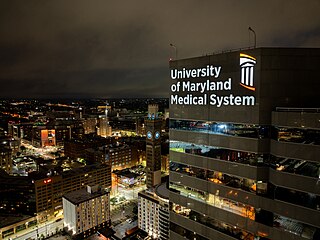
The University of Maryland Medical System (UMMS) is a private, not-for-profit corporation founded in 1984 and based in Baltimore, Maryland. As of 2023, it owns and operates 11 hospitals in Maryland, 4 free-standing emergency rooms and over 150 care locations, including a network of urgent care centers. The System has more than 2,400 licensed beds, 100,000 annual admissions and gross patient revenues of $4.86 billion annually. University of Maryland Medical System medical staff work with University of Maryland School of Medicine specialists to provide primary and specialty care across the state.

R Adams Cowley Shock Trauma Center is a free-standing trauma hospital in Baltimore, Maryland and is part of the University of Maryland Medical Center. It was the first facility in the world to treat shock. Shock Trauma was founded by R Adams Cowley, considered the father and major innovator of trauma medicine.
Richard H. Jadick is an American naval surgeon who was awarded the Bronze Star with “Combat V” device for heroic valor in January 2006. He was credited with saving the lives of 30 Marines and sailors during the Second Battle of Fallujah. Jadick was a lieutenant commander in the U.S. Navy Reserve, assigned as a battalion surgeon to the 1st Battalion, 8th Marine Regiment of the 2nd Marine Division from Camp Lejeune, North Carolina. Jadick is considered the Iraq War's most decorated doctor.
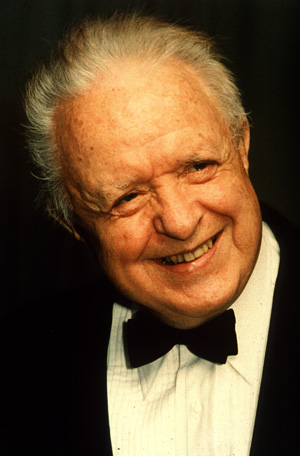
R Adams Cowley was an American surgeon considered a pioneer in emergency medicine and the treatment of shock trauma. Called the "Father of Trauma Medicine", he was the founder of the United States' first trauma center at the University of Maryland in 1958, after the United States Army awarded him $100,000 to study shock in people—the first award of its kind in the United States. The trauma unit at first consisted of two beds, and was later expanded to four beds. Many people called the four-bed unit the "death lab." Cowley was the creator of the "Golden Hour" concept, the period of 60 minutes or less following injury when immediate definitive care is crucial to a trauma patient's survival. He was a leader in the use of helicopters for medical evacuations of civilians, beginning in 1969, and founded the Society of Thoracic Surgeons. He also founded the nation's first statewide EMS system, called MIEMSS by Executive Order of Maryland's Governor Mandel, 1972, as well as the National Study Center for Trauma and EMS, enacted by Congress in 1986 and signed into law by President Ronald Reagan. He is also known for being one of the first surgeons to perform open-heart surgery and invented both a surgical clamp that bears his name and the prototype pacemaker that was used by Dwight D. Eisenhower.

Wayne Maurice Caron was a United States Navy hospital corpsman who was killed in action while serving with a Marine Corps rifle company in the Vietnam War. For heroic actions above and beyond the call of duty on July 28, 1968, he was posthumously awarded the United States military's highest decoration for valor—the Medal of Honor.
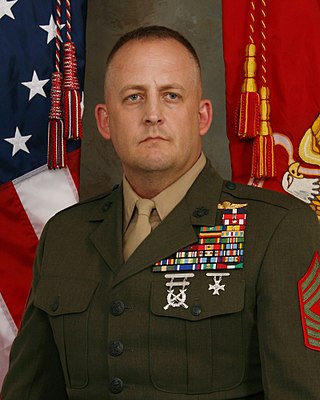
Justin D. LeHew is a United States Marine who served in the War on Terror. He was awarded the Navy Cross for his actions on 23 and 24 March 2003 during the initial 2003 invasion of Iraq. He was hand picked to spearhead the rescue operation and recovery of the U.S. Army's 507th Maintenance Company on 23 March and subsequently was called upon again to take part in the rescue operation of US Army Private Jessica Lynch on 1 April 2003. He is also a recipient of the Bronze Star with Combat Distinguishing Device denoting Valor for his heroic actions from 5 to 28 August 2004 during the Battle of Najaf.

A Special Amphibious Reconnaissance Corpsman (SARC) is a United States Navy hospital corpsman who provides MARSOC and other USSOCOM units advanced trauma management associated with combatant diving and parachute entry. Traditionally, they are attached to the Marine Corps Force Reconnaissance companies to help support the Command Element of the Marine Air-Ground Task Force in special reconnaissance missions.

Luis E. Fonseca, Jr. is a United States Navy hospital corpsman who was awarded the Navy Cross for extraordinary heroism on March 23, 2003, while assigned to a Marine Corps amphibious assault vehicle platoon serving with the 1st Battalion, 2nd Marine Regiment, during the Battle of An Nasiriyah in An Nasiriyah, Iraq. This was the first major battle fought in Iraq by the U.S Marine Corps during Operation Iraqi Freedom.
A wilderness medical emergency is a medical emergency that takes place in a wilderness or remote setting affinitive care. Such an emergency can require specialized skills, treatment techniques, and knowledge in order to manage the patient for an extended period of time before and during evacuation.
















